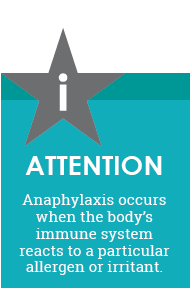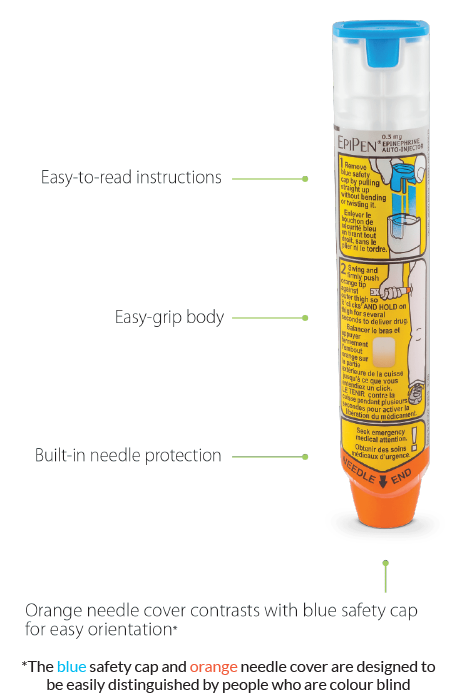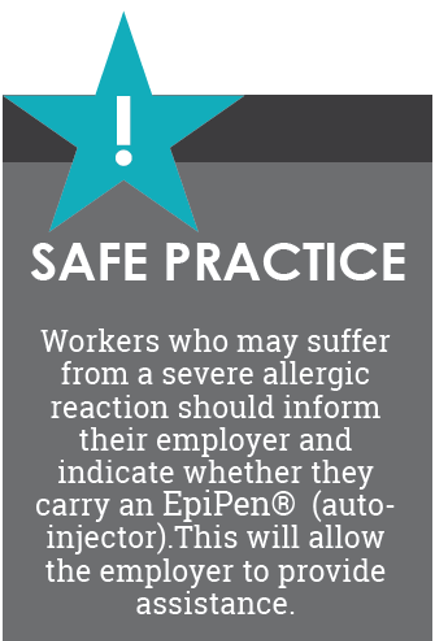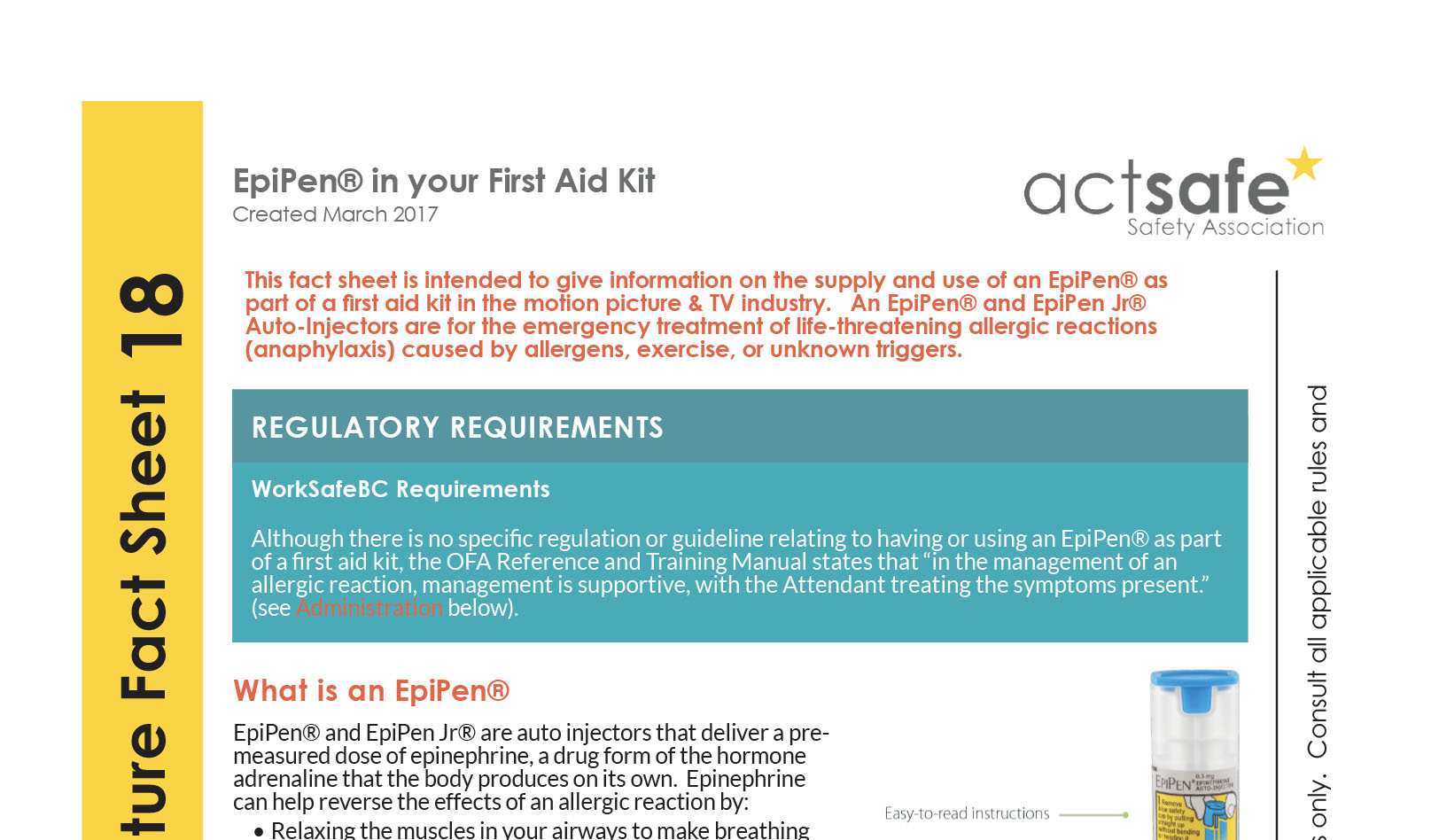This fact sheet is intended to give information on the supply and use of an EpiPen® as part of a first aid kit in the motion picture & TV industry. An EpiPen® and EpiPen Jr® Auto-Injectors are for the emergency treatment of life-threatening allergic reactions (anaphylaxis) caused by allergens, exercise, or unknown triggers.
REGULATORY REQUIREMENTS
WorkSafeBC Requirements
Althought there is no specific regulation or guideline relating to having or using an EpiPen® as part of a first aid kit, the OFA Reference and Training Manual states that “in the management of an allergic reaction, management is supportive, with the Attendant treating the symptoms present.” (see Administration below).
What is an EpiPen®
EpiPen® and EpiPen Jr® are auto injectors that deliver a pre-measured dose of epinephrine, a drug form of the hormone adrenaline that the body produces on its own. Epinphrine can help reverse the effects of an allergic reaction by:
- Relaxing the muscles in your airways to make breathing easier
- Helping to reverse the rapid and dangerous decrease in blood pressure
- Relaxing the muscles in the stomach, intestines and bladder

Allergists advise that an epinphrine auto-injector be the first lin of treatment for anaphlaxis.
Even after epinephrine has been administered, immediate emergency medical treatment is still necessary. You will need professional care to determine whether additional epinephrine, steroids, antihistamines or other treatments are required.
Like all medicines, epinephrine may cause side effects. Some side effects from using pinephrine may include a rapid heart rate, paleness, dizziness, weakness, tremors or headache.

Administration
If an EpiPen® must be administered to a person that is conscious, a first aid attendant may assist the patient by helping to hold the injector at a 90-degree angle to the skin and press against the thigh muscle. Once the “click” is heard, hold the pen in place for a full 10 seconds. Massaging the area will aid in quicker dispersal.
An attendant may administer an EpiPen® to an unresponsive patient if the following three criteria are met:
- There is history of exposure to an allergen
- The patient shows signs of anaphylactic shock
- There is no known reason not to give the EpiPen® for example, if the patient has a know heart condition
In addition, if administering an EpiPen® to an unresponsive patient, then certain other observations should be taken. These can include any visual signs that would conclude the patient is suffering from an allergic reaction (such as a visible bee sting, hives and swelling about the face and neck) knowing that the patient was trying to administer the EpiPen® before they went unconscious (an un-used EpiPen® is in the patient’s hand or laying nearby) .

SOURCES
Information in this fact sheet was obtained from the following sources:
WorkSafeBC
Food Allergy Canada
Health Canada
EpiPen®



Share Now: